Papaya (pawpaw)
Crop Details
The following are the crop details for papaya.
- Scientific name: Carica papaya
- Local names: Pawpaw
- Order: Violales.
- Family: Caricaceae
- Genus: Carica.
General information
Pawpaw (Carica papaya L.) is a popular tropical American fruit. It is commonly cultivated for its small to large melon-like fruit.
The type of inflorescence produced by papaya trees reflects whether the tree is male, female, or hermaphrodite. Male trees have many flowers on long, pendulous panicles, whereas female trees have solitary flowers or clusters of a few yellow-green flowers.
The papaya fruit is a large fleshy berry with smooth green skin that turns yellow or orange when ripe. The fruit's flesh is thick and succulent, ranging in color from yellow to red or orange. Many black wrinkled seeds are present in the fruit.
Papaya trees can live for up to 25 years and grow to a height of 2-10 m (6.6-33 ft). To ensure maximum productivity, plantations are typically replaced every three years.
Papaya, also known as pawpaw, is thought to have originated in the Caribbean region of Central America.
Pawpaw varieties
The following are the most commonly grown pawpaw varieties in Kenya:
Sunrise- produces high-quality smooth pear-shaped fruits weighing 400-650g.
The flesh of the fruits is reddish-orange, and the variety is prolific.
Mountain- produces small fruits that are only suitable for jam and preserves.
Solo- grows small round sweet fruits that are uniform in size and shape.
Red royale F1- this is an improved breed that produces high-quality fruits weighing 1.7-2.3kgs, with a red attractive color and a sweet flavor.
Uses
The ripe fruits are high in vitamins C and A, which are frequently lacking in the diets of people living in the tropics. Immature fruits are stewed or boiled as a vegetable in some countries, such as the Philippines.
The unripe fruits of the C. papaya tree contain papain, a substance used commercially as a meat tenderizer. Crumpled leaves are used as a meat tenderizer in Southern Asia before wrapping meats.
Papain also has medicinal and industrial applications, such as tanning leather, preventing wool shrinkage, and keeping beer clear during the brewing process.
Propagation
Basic information
Papaya is a tropical plant that grows best in temperatures ranging from 21 - 33°C in frost-free areas. Papaya can be grown in a variety of soils as long as adequate drainage is provided, but it grows best in light, well-draining soils with a pH between 5.5 and 6.5.
A monthly rainfall of about 4 inches is required for papaya. Supplemental irrigation should be provided for trees in areas with low rainfall.
Water-logged soils should be avoided because trees are extremely sensitive to flooding. Papaya trees are also susceptible to high winds, and tall trees can easily topple. Planting should be avoided in windy areas.
Seed propagation
Pawpaw is almost entirely propagated from seeds in commercial cultivation. Seeds may be sown in trays filled with a suitable medium, peat pots, polyethylene bags, or directly in the field.
Germination occurs in 12-20 days. Seedlings are transplanted into 7.6 cm peat pots or 10 cm plastic bags at the two-leaf (cotyledonary leaves) stage, preferably at the onset of the rainy season.
Care should be taken during transplanting to avoid disturbing the roots. After planting out. Container-grown seedlings should be gradually hardened in sunlight before being field-transplanted 1.5-2 months after germination, at about 20 cm high and at the 8- to 12-leaf stage. Up to 15-20 seeds are sown in each hole during field planting.
Upon germination, seedlings are thinned out to leave five or six seedlings to grow to flower. At first flowering, a vigorous plant of the desired sex is kept and the others removed.
Cultivation
Site preparation and planting
Field preparation in many areas is poorly done due to lack of appropriate equipment or rough terrain. On heavy or compacted soils, subsoiling or ripping down to 50 cm or more is desirable to allow roots to penetrate deeply. Planting holes 30-45 cm in diameter are best dug with a tractor-mounted soil auger. If there is a chance of flooding, raised beds are used.
After about 6-8 weeks in the nursery, the seedlings should reach the 8- to 12-leaf stage and are most suitable for field planting. In rain-fed areas, field planting is done at the beginning of the rainy season. Seedlings grown in pots and bags are planted directly, with the removal of the pot or bags. Transplanted plants must be watered soon after planting to settle the soil around the root system.
Spacing between plants and between rows varies widely. Universally practiced is the single-row system, with plant spacing ranging from 1.8 to 3 m and between-row spacing varying from 1.8 m to as much as 3.6 m. The between-row spacing largely depends upon the degree of mechanization; a standard tractor requires approx. 3 m. The most frequently used spacing is 2.0-2.5 m within row × 2.5 m, giving a density of 1600-2000 plants/ha. The double-row system, with 2 m between a set of rows and 3.5 m between double rows, is used. Normally, two or three seedlings are planted in each hole, spaced about 30 cm apart.
Pawpaw general care and maintenance
Weeds are a major source of competition for papaya seedlings, so keep the areas around the trees weed-free. Weeds can be effectively suppressed by a layer of mulch around the plants.
To meet the nutrient requirements for fruit production, papaya necessitates regular fertilizer applications. Fertilizer is typically applied 2-4 times per year in commercial plantations. In the home garden, 1/4 cup of a balanced fertilizer applied every 14 days is usually sufficient.
The amount of fertilizer should be increased as the trees mature. When the trees are 7 to 8 months old, 1-2 pounds of complete fertilizer should be applied every 2 months.
Papaya trees should be watered regularly, particularly during hot, dry periods. Papaya trees do not require pruning but it is good practice to remove any dead leaves from the tree.
Harvesting
Papaya fruits typically take 22-26 weeks to mature. The fruits can be picked when one-fifth of the fruit surface has turned from green to yellow, but leaving them on the tree longer increases the fruit's sugar content. Fruit can be twisted or snapped off the tree, or it can be cut using a sharp knife.
References
CABI Crop Protection Compendium. (2008). Carica papaya (papaw) datasheet. Available at: http://www.cabi.org/cpc/datasheet/13392. [Accessed 03 March 15]. Paid subscription required. Crane, J. H. Papaya growing in the Florida home landscape. University of Florida IFAS Extension. Available at: https://edis.ifas.ufl.edu/pdffiles/MG/MG05400.pdf. [Accessed 03 March 15]. Free to access. Nishina, M., Zee, F., Ebesu, R., Arakaki, A., Hamasaki, R., Fukuda, S, Nagata, N., Chia, C. L., Nishijima, W., Mau, R. & Uchida, R. (2000). Papaya production in Hawaii. College of Tropical Agriculture and Human Resources, University of Hawaii at Manoa. Available at: http://www2.ctahr.hawaii.edu/oc/freepubs/pdf/F_N-3.pdf. [Accessed 03 March 15]. Free to access. Ploetz, R. C., Zentmyer, G. A., Nishijima, W. T., Rohrbach, K. G. & Ohr, H. D. (eds) (1994). Compendium of Tropical Fruit Diseases. American Phytopathological Society Press. Available at: http://www.apsnet.org/apsstore/shopapspress/Pages/41620.aspx. Available for purchase from APS Press.
Papaya (pawpaw) | Diseases and Pests, Description, Uses, Propagation. (n.d.). Papaya (Pawpaw) | Diseases and Pests, Description, Uses, Propagation. Retrieved February 3, 2023, from https://plantvillage.psu.edu/topics/papaya-pawpaw/infos
CABI. (n.d.). https://www.cabidigitallibrary.org/doi/10.1079/cabicompendium.13392. (n.d.).
Common Pests and Diseases
Diseases
Category : Fungal
Anthracnose and charcoal spot Colletotrichum gleosporoides
Symptoms
Small water-soaked lesions of fruit during ripening; circular sunken lesions with light brown margins.
Cause
Fungus
Is caused by Glomerellacingulata, primarily infecting the fruit. The disease appears as small water-soaked circular spots that enlarge into brown-black sunken lesions as the fruit ripens. Fungicidal sprays can control this disease. A 20-minute hot-water dip (45°C) reduces post-harvest decay.
Comments
Management
Appropriate protective fungicides should be applied; dipping fruits in hot water at 48°C for 20 minutes reduces the incidence of the disease.












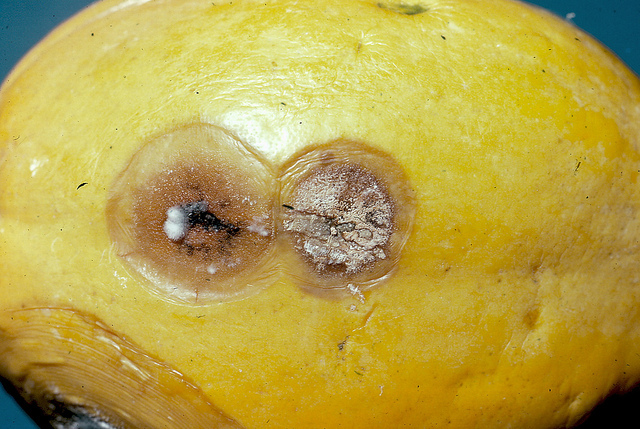



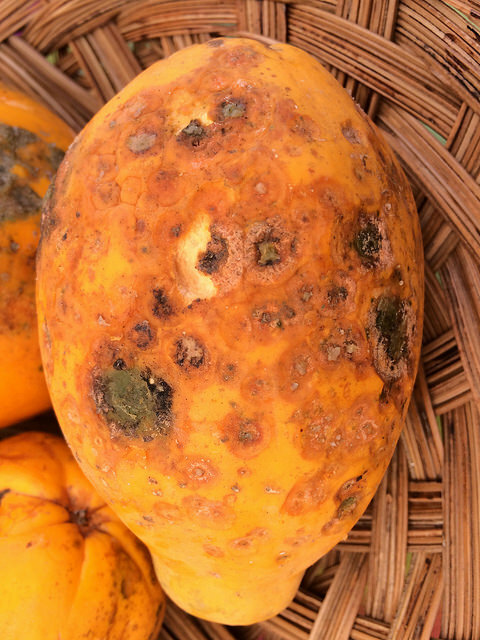
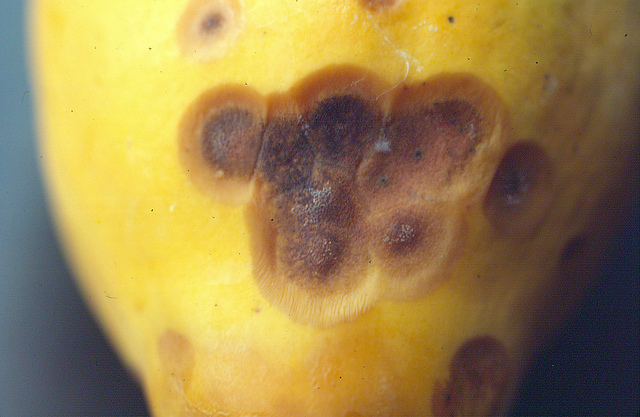




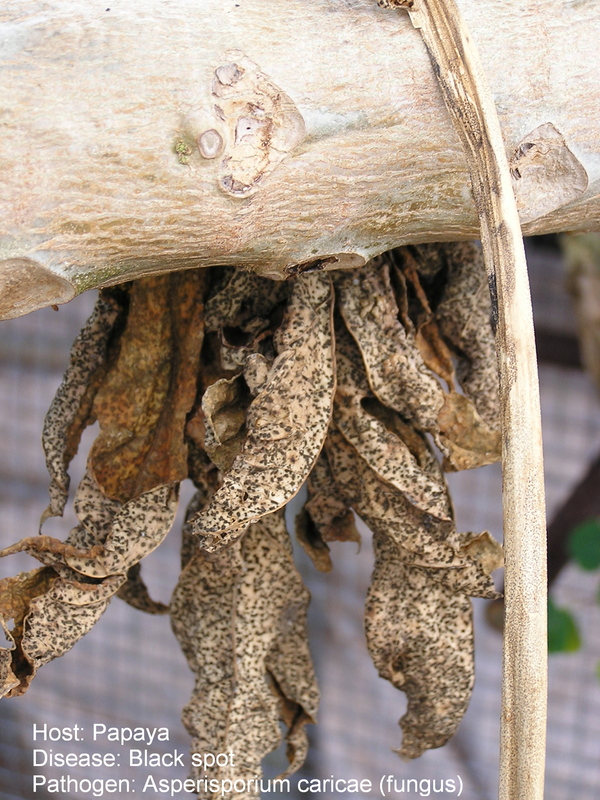
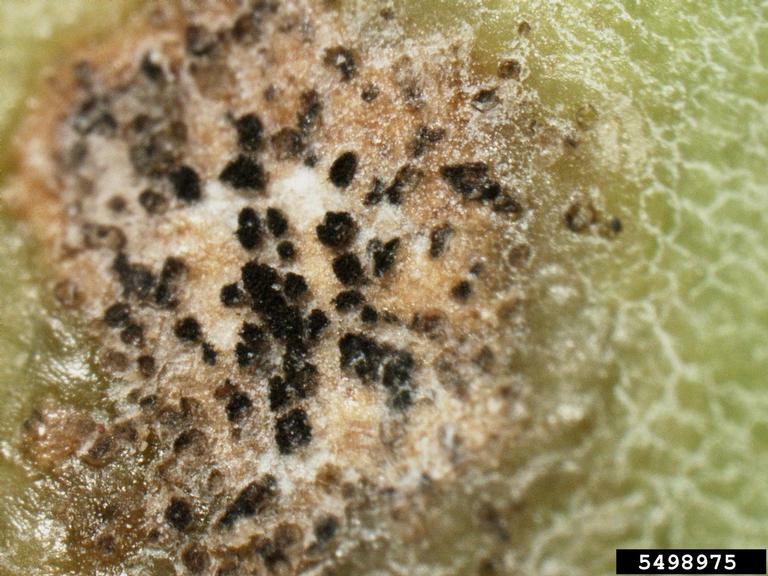

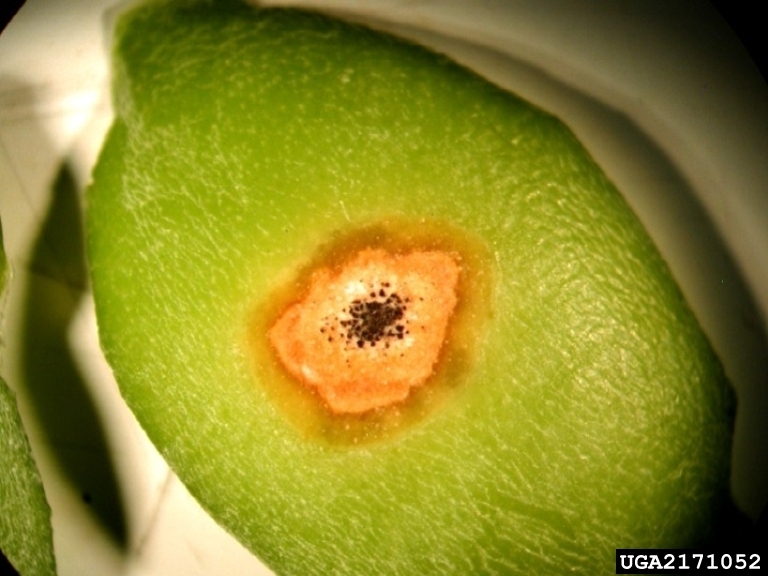

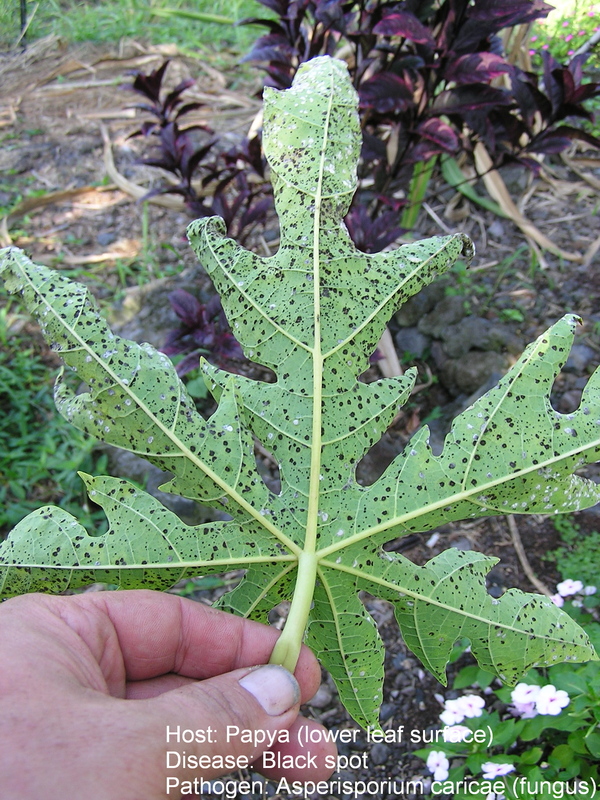


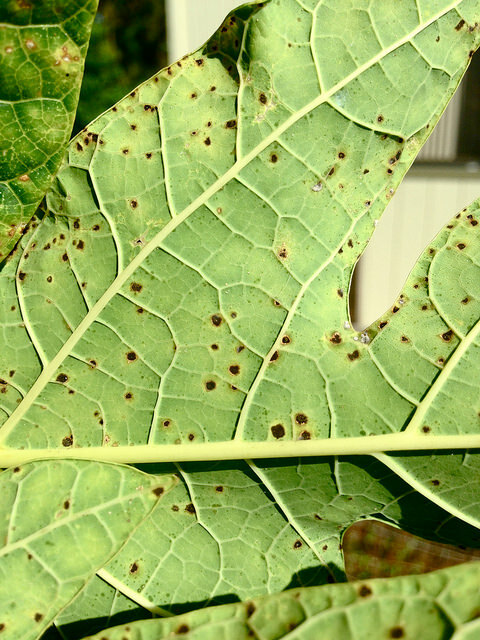


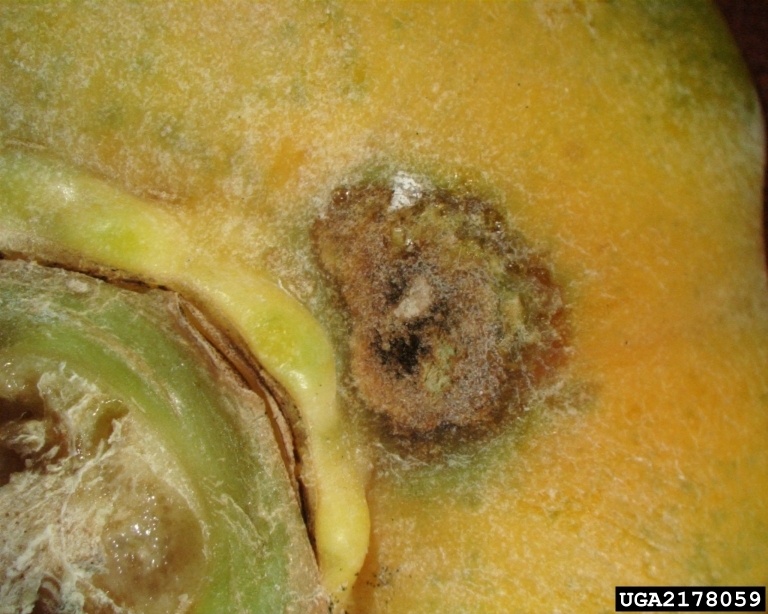


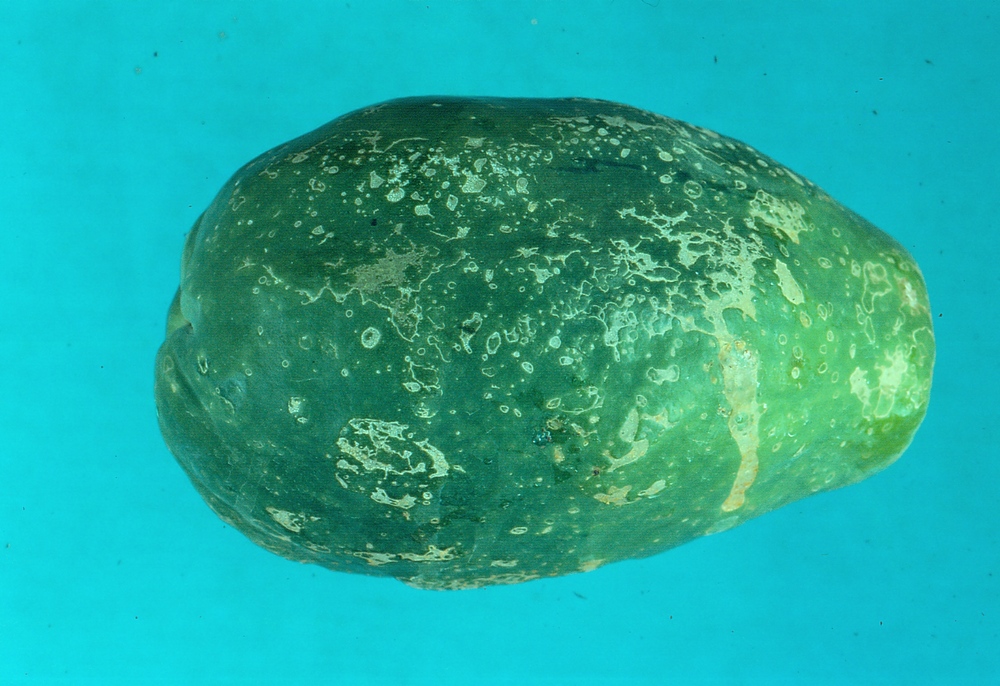
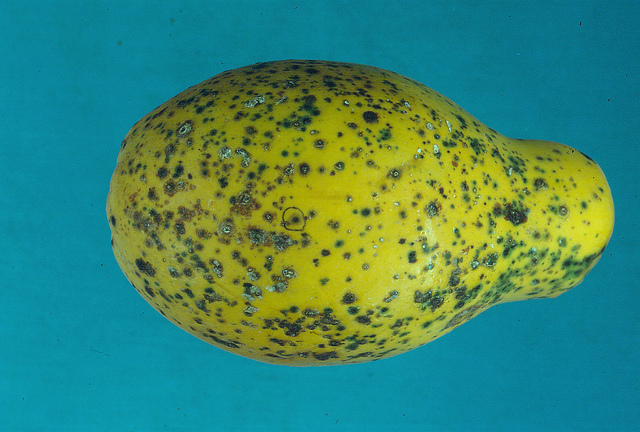
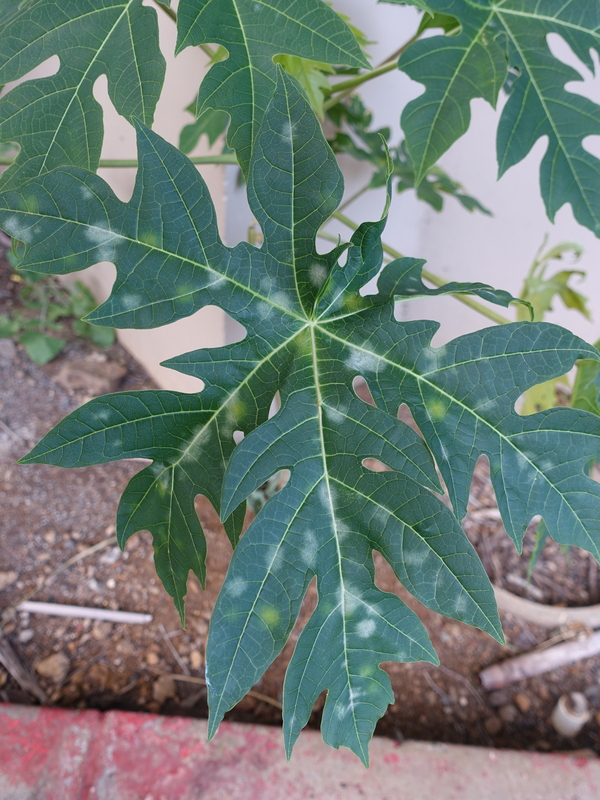


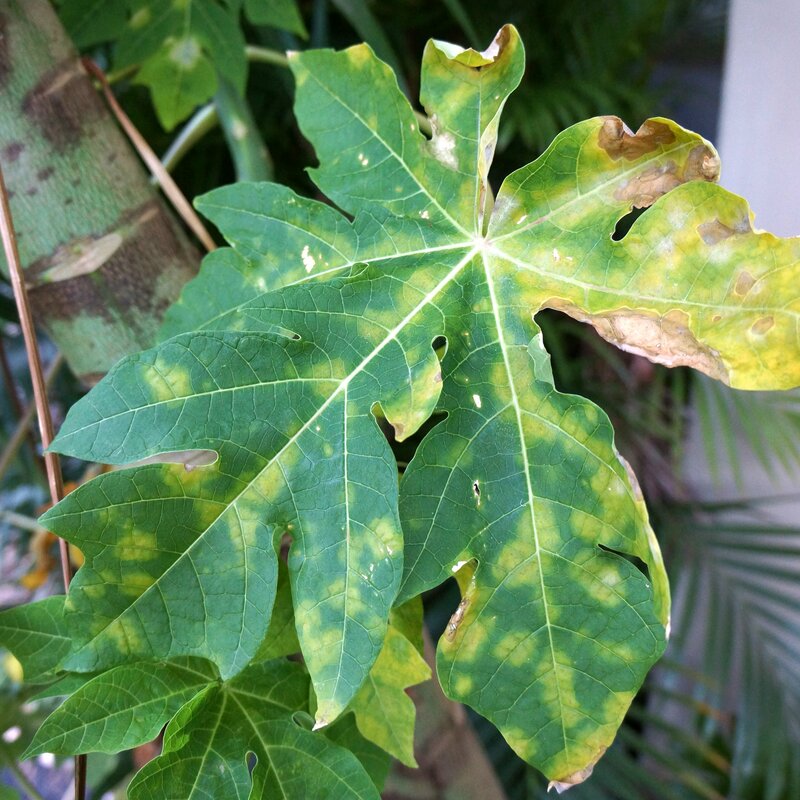
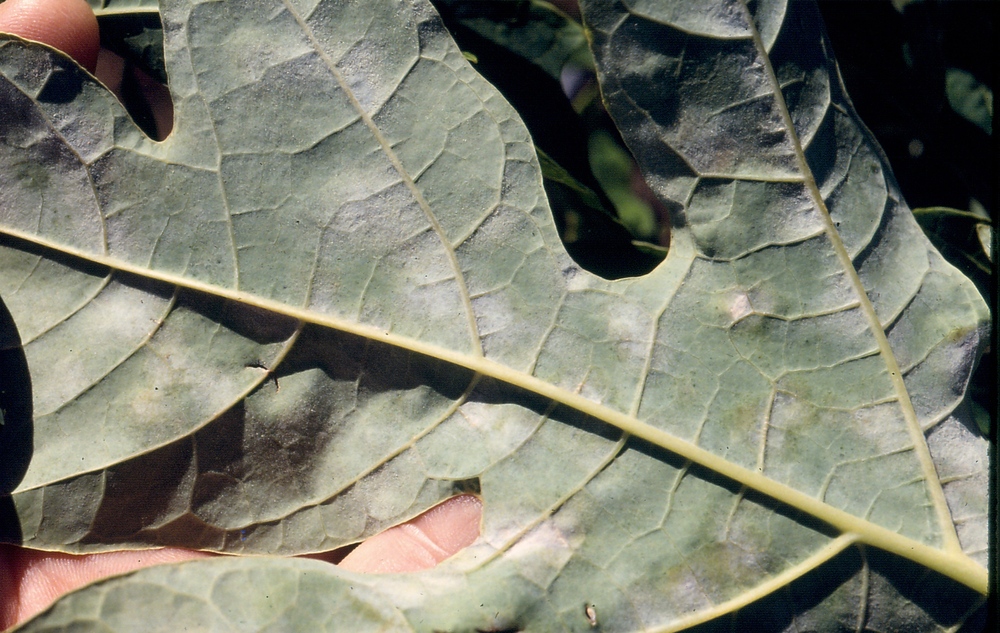





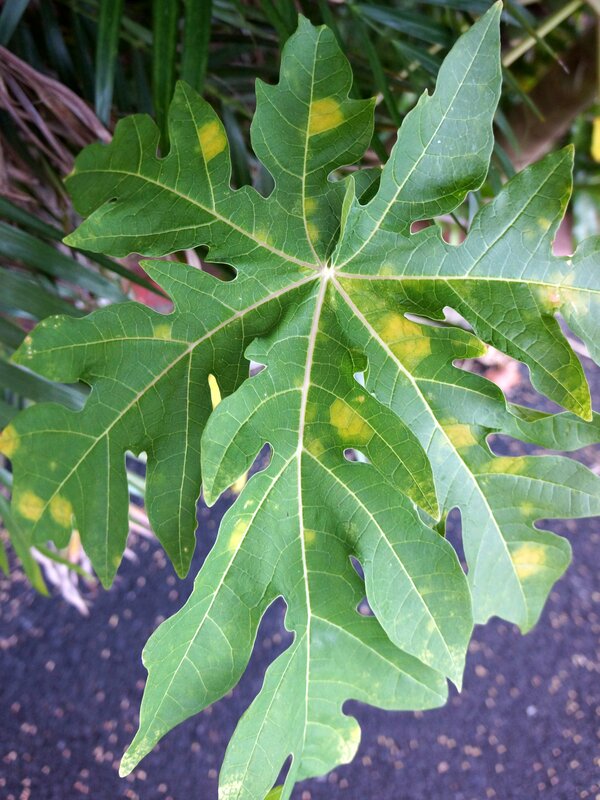
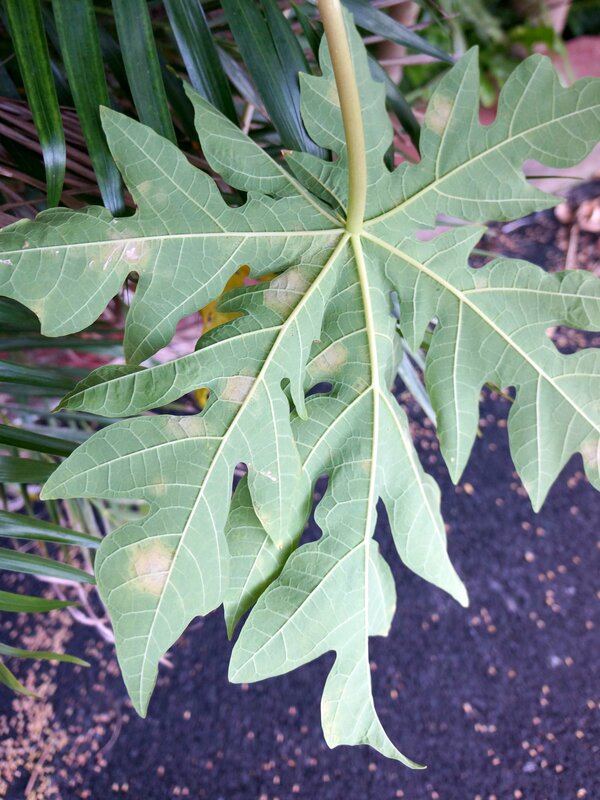


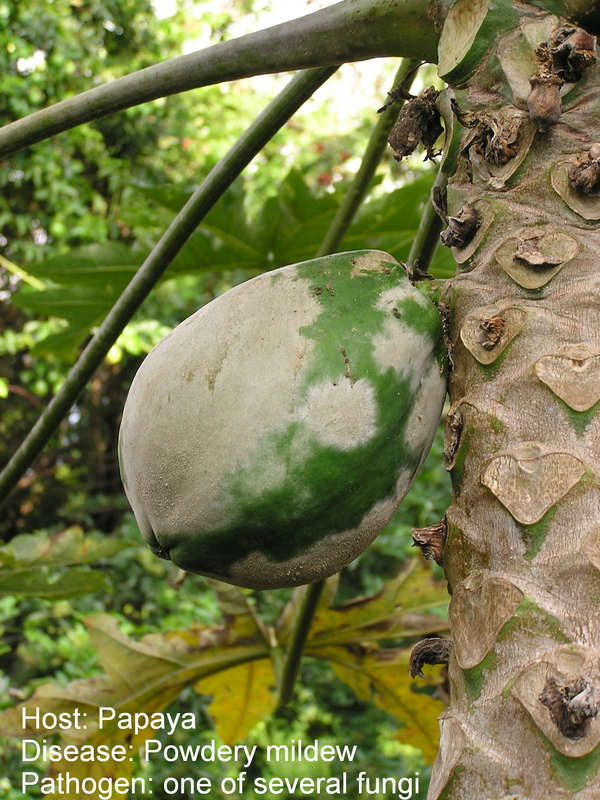






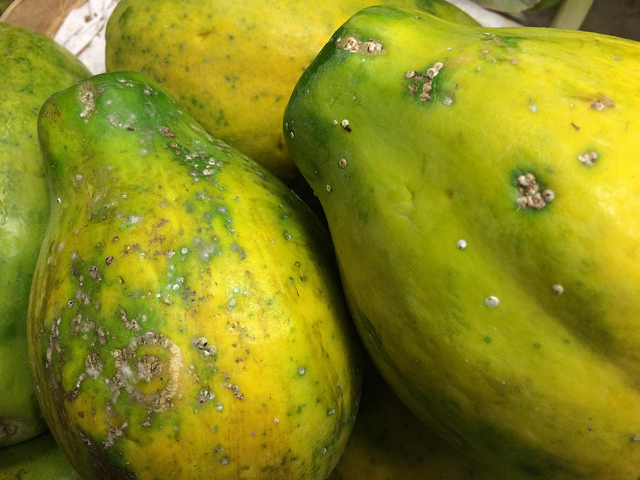

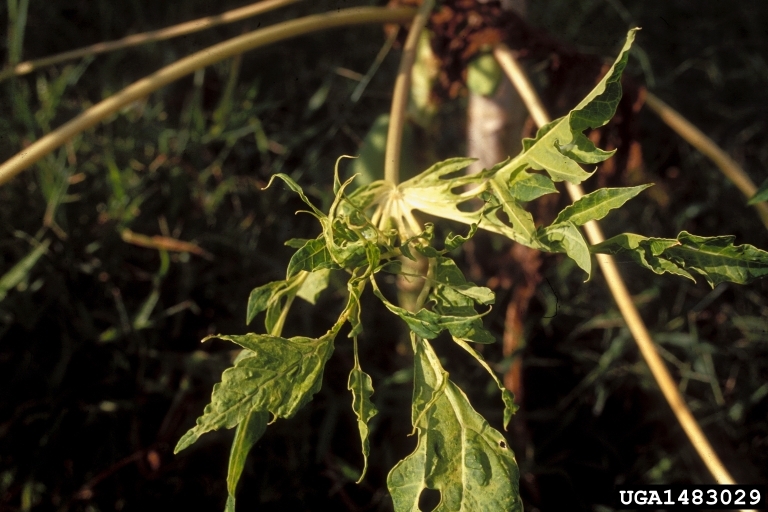

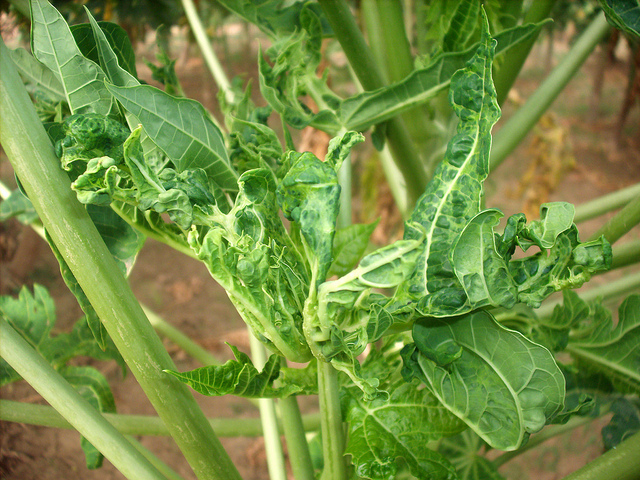






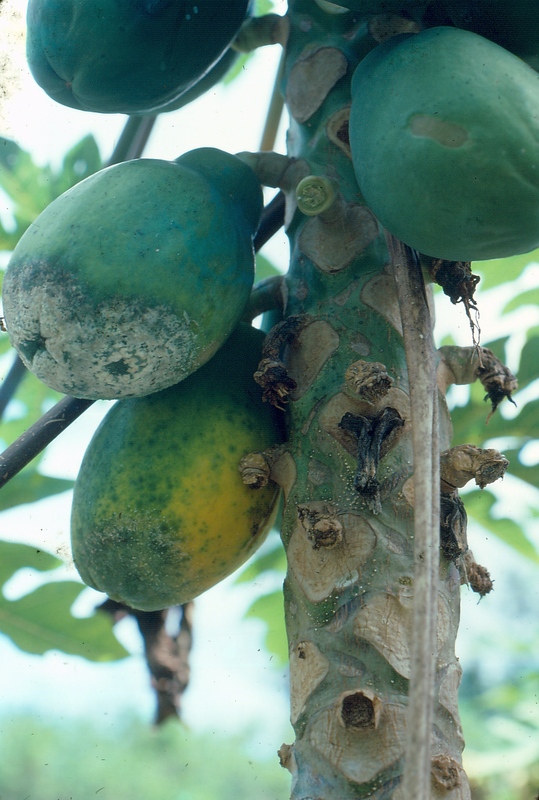


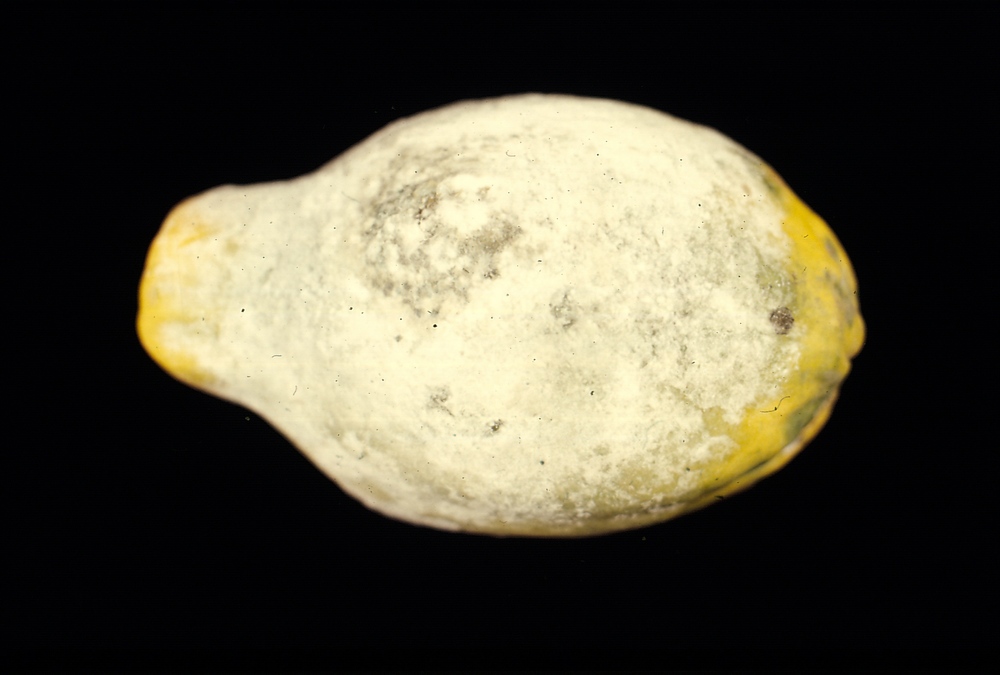

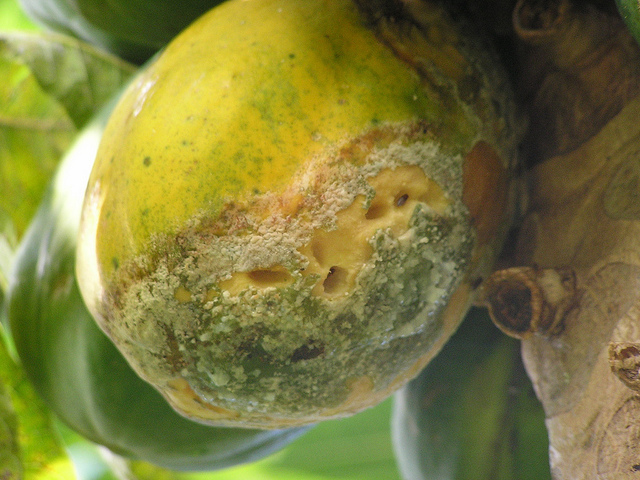



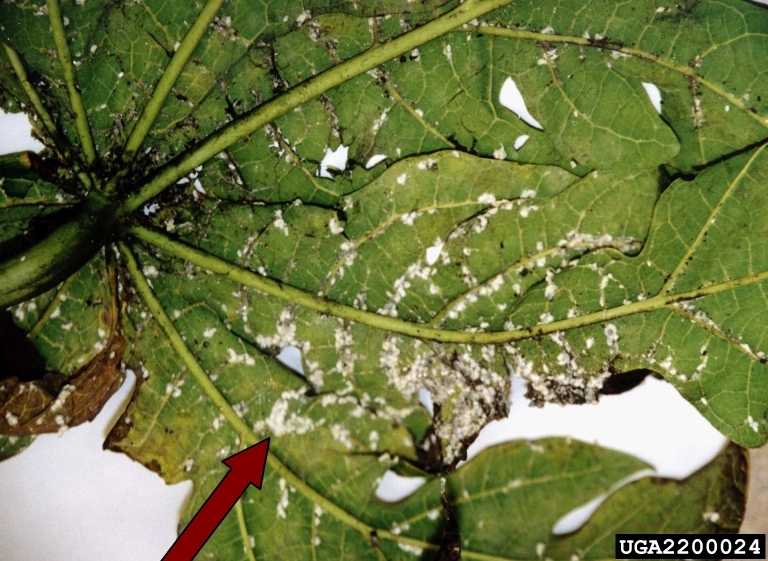
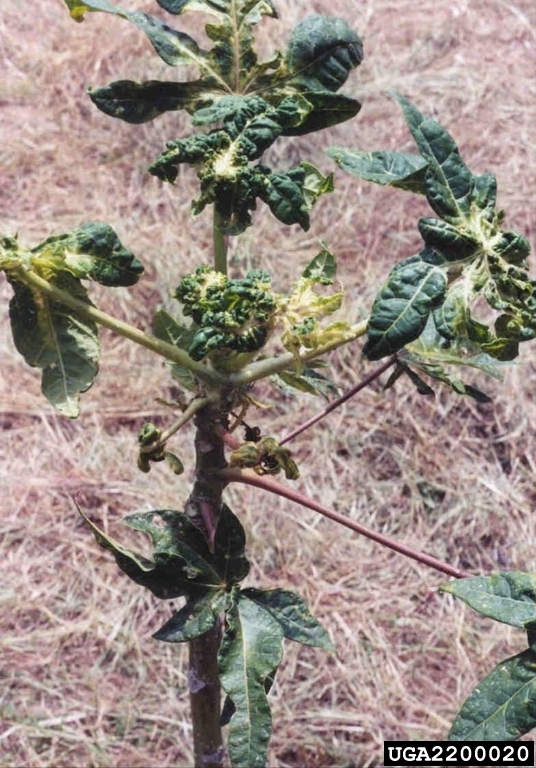

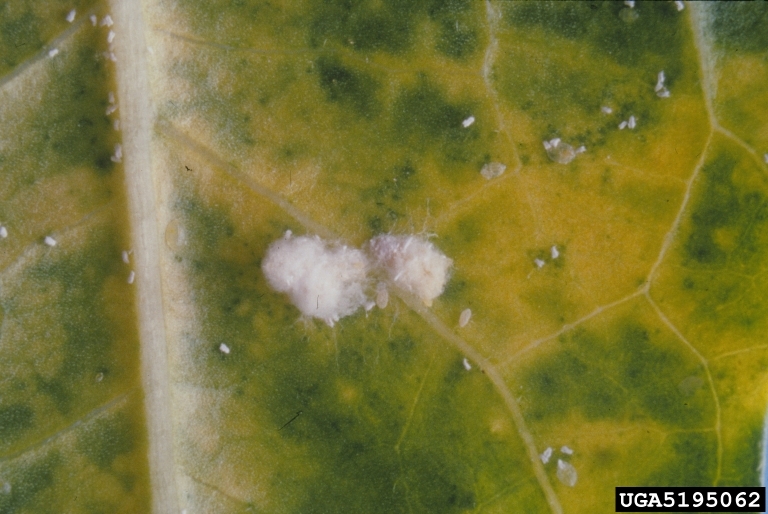

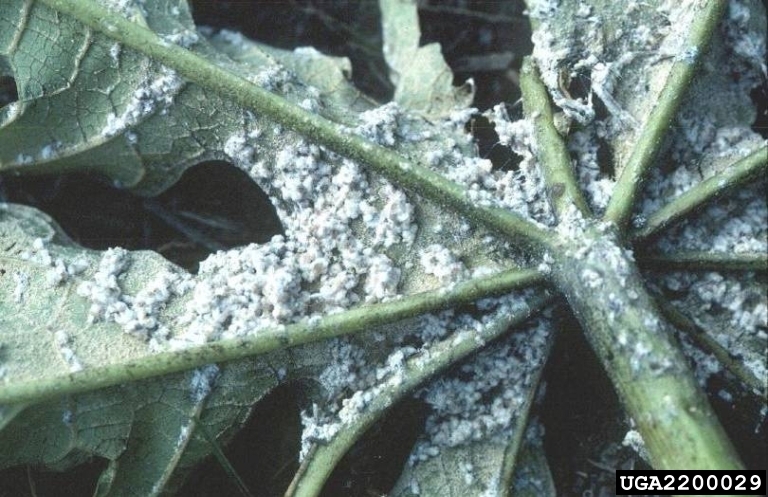
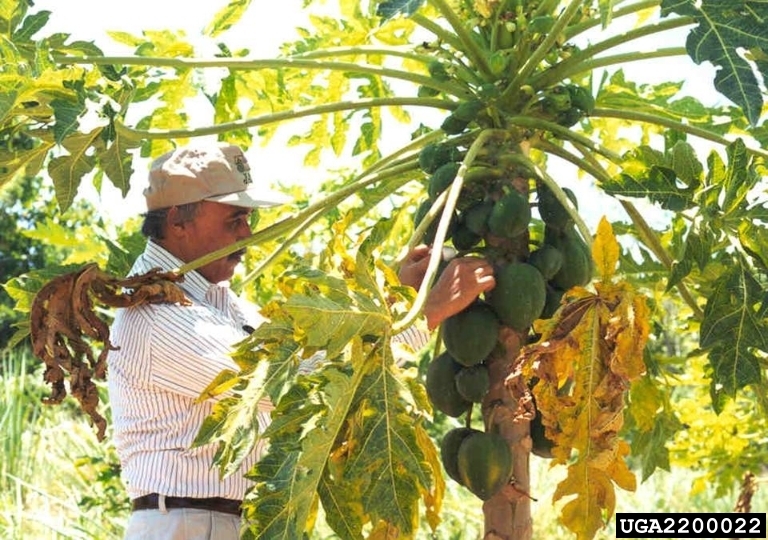


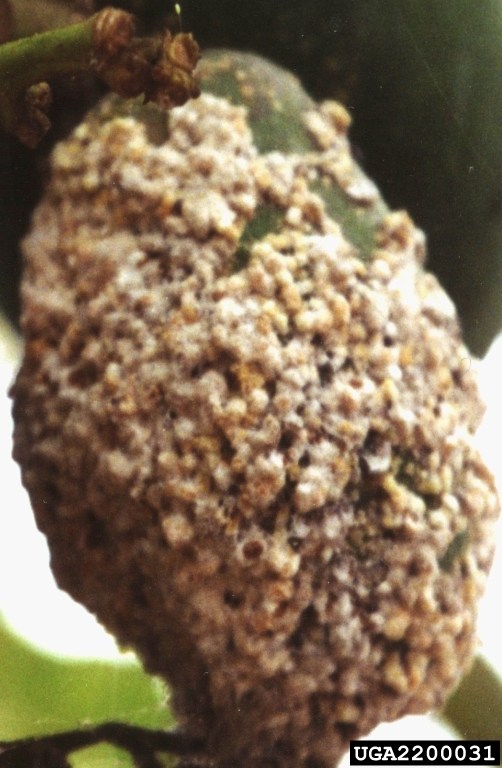
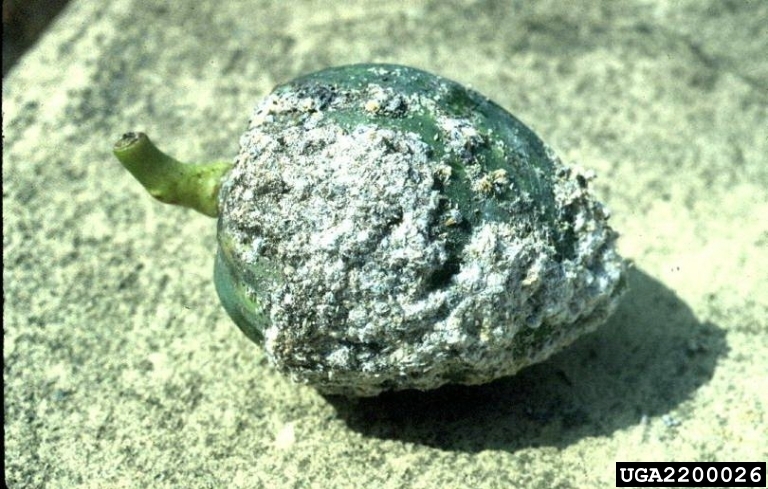


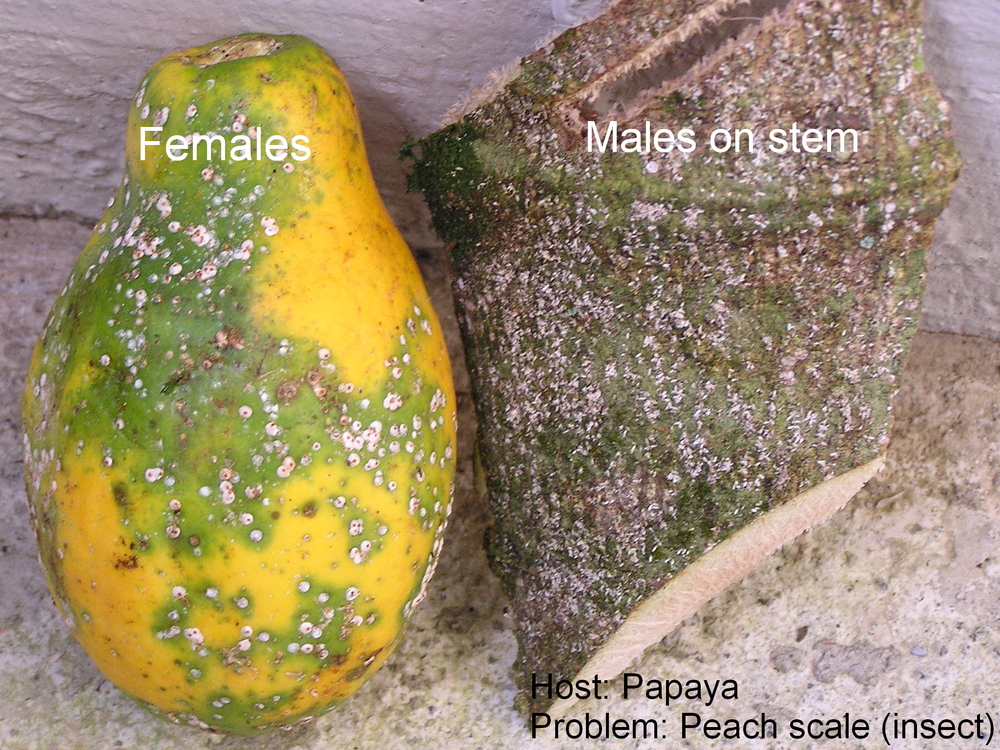

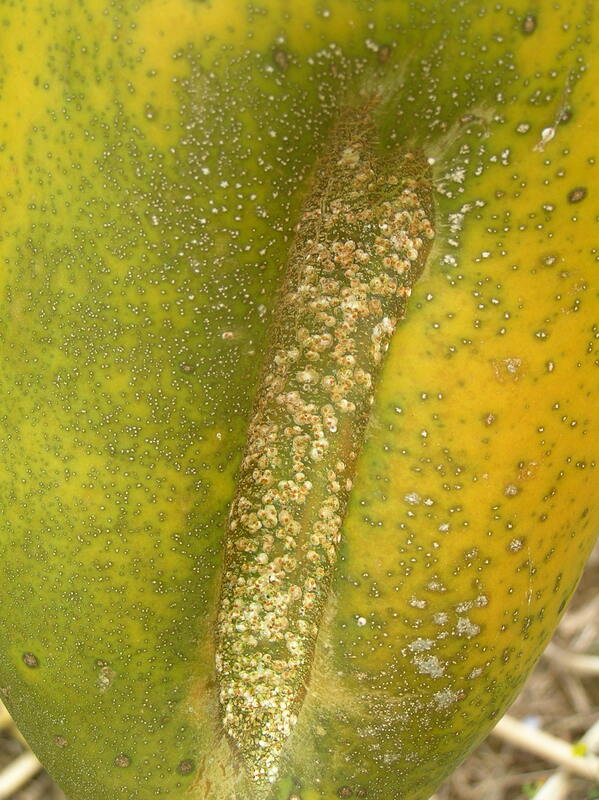
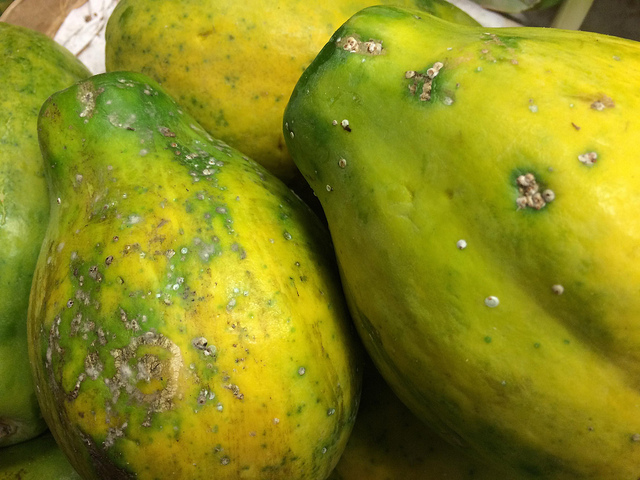
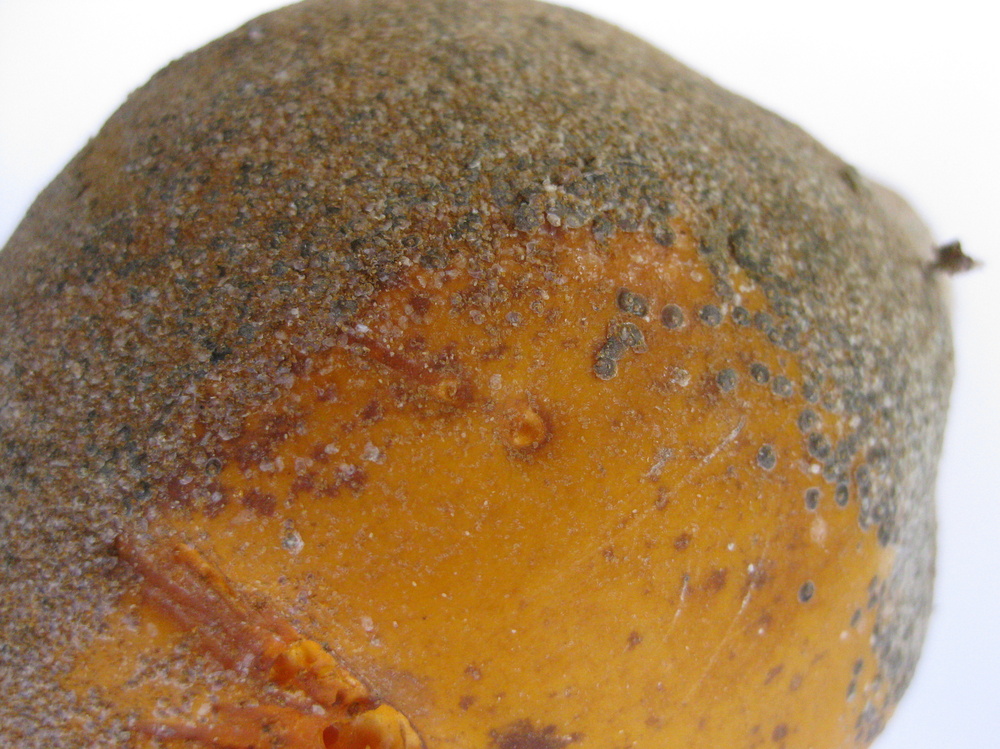
Fungi spread by wind and rain; disease emergence favored by high temperature and humidity; disease can have a serious impact on refrigerated fruit for export.